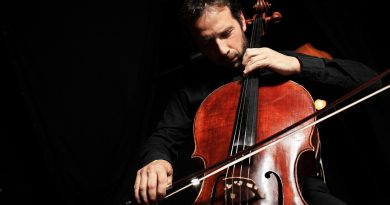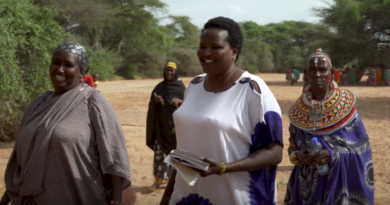I have a dream (of a different kind of classroom)
(Uplift | Andrew D. Kaufman) Since the day that Martin Luther King Jr. gave his iconic speech nearly six decades ago in 1963, he has inspired thousands, if not millions, of people to dream bigger. Whether that means standing up against social injustices, volunteering in our community, or contributing to education reform, many of us have been inspired to leave the world a better place.
Learning takes place where life takes place
“The goal of an artist,” Tolstoy wrote, “is not to solve a question irrefutably, but to teach people to love life in all its countless inexhaustible manifestations.”
Teachers aim for something very similar: to inspire students to break down old paradigms and see life through sparkling new eyes, to help them cherish the individuality of every living creature and the dignity of every human being, to model for them a way of engaging the world and solving problems that draw on the intellect, heart, spirit, and body all working in concert.
As it happens, this is precisely the vision of society put forth by Martin Luther King.
The traditional classroom model is outdated
Over the course of my twenty-five years as a college teacher, creator of the Books Behind Bars education program, and humanities scholar, I’ve developed an approach to teaching that starts from this assumption: that the four-walled classroom in which teaching traditionally takes place is far too small to generate the kind of deep learning that helps develop fully realized individuals.
Learning takes place where life takes place, and life happens everywhere, all the time.
The traditional notion of a classroom, then, as a space in a building where knowledge is transferred from one mind to others—what Paulo Freire famously referred to as the “banking model of education”—is much too constrained to encapsulate either the geography of the human mind or the range of human experience that a student must encounter and explore in the pursuit of genuine knowledge.
 Learning takes place where life takes place. Image: Anna Samoylova
Learning takes place where life takes place. Image: Anna SamoylovaNow, I realize that such a claim might seem impossibly grandiose. Admittedly, if I, as a college teacher, were to offer a course promising that my students would learn everything everywhere at all times, students would justifiably be so boggled they’d probably just walk away scratching their heads. Alas, as innovative people have long known, limits are often what begets creativity, whereas limitlessness can become so abstract and daunting as to lead to mind-exploding confusion.
And yet… here we are, almost two decades into the twenty-first century, and mind-exploding confusion is all around us. We’re a society in spiritual disarray. A society of ideological factions unwilling or unable to listen to one another. A society of individuals and groups for whom the words ‘government’ and ‘democracy’ carry so many different, conflicting meanings—from the ennobling to the oppressive—that there seems to be precious little holding our torn social fabric together.
If Abraham Lincoln was right that “the philosophy of the schoolroom in one generation becomes the philosophy of government in the next,” then we have a lot of soul-searching to do to figure out where education needs to go to get us out of this place.
Change comes with a change in thinking
I don’t know the solution but I believe that searching for it should be a matter of national concern. And we must start our quest in the classroom itself.
When I visit many college classrooms today whose layout and instructional delivery methods look quite similar to the way they did a century ago—with their clear hierarchies between the knowing professors and passive, receiving students, with their physical layouts of the raised podium and the sea of seats perfectly embodying this hierarchy—then something, I know, is seriously amiss.
If such an approach to teaching didn’t work too well a few generations ago, leading us to our current morass, then why would it lead to better results in the future?
I have a dream of a different kind of classroom altogether
I dream of a classroom that is a microcosm of the world itself, where things—real things, complex things, unpredictable things, beautiful things—happen. A place where students push their comfort zones in order to achieve tasks, where their paradigms and expectations are challenged, where they are surprised and intrigued and intrinsically motivated to want to know more, to understand more, to be more.
I dream of a classroom where students and reality collide, where knowledge is not just communicated but co-created, where deep, authentic conversation takes place and human beings are engaged in nothing less than a search for meaning and truth, come what may.
This sort of classroom cannot quite be summed up in such tried-and-true monikers as “student-centered learning,” or “active learning,” or “service-learning,” or even “experiential learning,” to say nothing of the much narrower, more traditional delineations by discipline. (As in: I teach literature, the guy down the hall teaches sociology, and the woman across campus teaches engineering, as if the ultimate goals of each of these three disciplines—human understanding—have little to do with one another.)
No, the classroom I’m dreaming of is a place much larger and more fluid than any of this, where boundaries are crossed, communities are formed and re-formed, and knowledge is created that is as large, alive, ever-changing, discomforting, and glorious as the world we live in. This classroom might be contained within four walls, or it might have no walls at all. What it is, ultimately, is a mindset, a reflection of how we want to relate to one another and the world around us.
The classroom of my imagination does not promote a unidirectional flow of knowledge from credentialed academic experts but rather the web-like circulation and creation of knowledge by everyone participating in the learning community:
- It is a place where more than mere academic learning is valued, but also personal growth, meaning-making, and civic learning are considered just as important.
- It is a place consisting not merely of transactional exchanges but transformative partnerships.
- A place that empowers people not just to know but to serve, not just to do better but to be better, to commit to the improvement of our collective well-being.
It is in this special place, I propose, that the kind of learning happens that can heal our broken world.
Source: Uplift
You may also like:
Why emotions should be taught in schools rather than ignored & suppressed
Twelve things you were not taught in school about creative thinking




